Posted on 6/13/2017
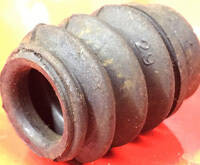
We played “What’s That Wednesday” with this part — it’s a brake caliper slide pin boot! We had so much interest in our “What’s That Wednesday” social media post that we decided to expand on it a bit. The “mystery part” we showed was a brake caliper slide pin boot. But what exactly is that? Cars these days all have disc brakes. The main parts include names like; brake pads, calipers, rotors or discs. The brake caliper is hydraulically operated (essentially by your foot) and is responsible to clamp down on the brake pads to create friction against the rotating brake rotor. The wheel is bolted to the brake rotor. While there are several designs for brake calipers, the most common type is the “floating” caliper. This has two main sections… a bracket (blue in the picture), which solidly mounts to a suspension component. The caliper body (yellow in these pictures), which mus ... read more
Posted on 6/6/2017
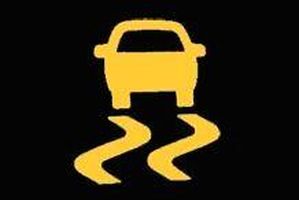
No, this light doesn’t mean snakes are following your car. It’s the indicator for the Traction Control System. To keep the car from losing traction and possibly causing an accident, many cars come with a Traction Control System, or TCS. On-board computers monitor wheel speeds and braking pressures to determine if one or more wheels lose traction. If that happens, the system automatically transfers power to the wheels that are still grabbing the pavement. The TCS also has some control over the engine output to keep an overactive right foot from inadvertently causing loss of control. Both two-wheel drive and all-wheel drive (AWD) vehicles utilize these systems. Some AWD vehicles also have a special mode that locks all four wheels together. This mode is only used at extremely low speeds and is designed to aid in extricating the vehicle from snow, ice, mud, sand, etc. During the starting procedure, the TCS light comes on momentarily as the system activates a self-test. If ... read more
Posted on 5/23/2017
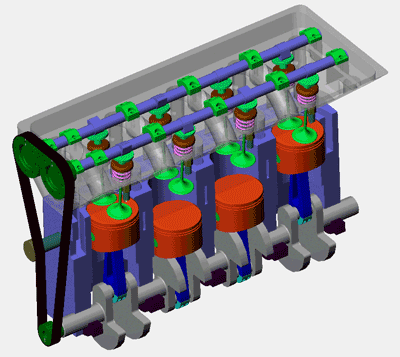
An animation showing a typical 4-cylinder engine. If you click to see the larger version, you’ll see the timing belt on the left side of the engine which synchronizes the crankshaft and camshafts. Four-cycle internal combustion engines use a camshaft to open and close the intake and exhaust valves. This shaft has an egg-shaped cam for each valve that pushes open the intake and exhaust valves in the proper sequence. The camshaft is timed or synchronized with the crankshaft (what the pistons are attached to). In completing the four cycles there are two revolutions of the crankshaft for every revolution of the camshaft. No matter how fast or slow the engine goes, this ratio stays the same. The timing belt governs that ratio. It has rounded “teeth” that engage with sprockets on both the c ... read more
Posted on 5/16/2017
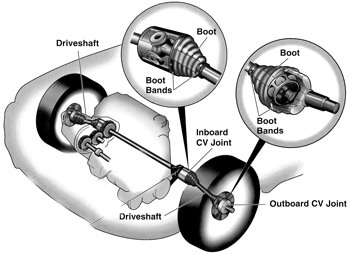
On front and all-wheel drive cars, the axle shafts are what connect the transmission with the wheels, driving the vehicle along. The axles must flex, allowing the suspension to move up and down and the front wheels to turn right and left, while at the same time transmitting the driving force from the engine to the wheels. Drive Axle Diagram A Broken CV Boot The part that simultaneously enables the axle to flex while transmitting the driving force is called a drive axle joint, and is also known as a constant velocity (or CV) joint. The CV Boot is a ribbed, rubber flexible boot that keeps water and dirt out of the joint and the special grease inside the joint. Pictured here is a view of a front, outer CV boot that has torn open. The greasy mass inside is the actual ... read more
Posted on 4/25/2017

When you’re driving, the only thing between you and the road moving past at 60-or-so miles per hour underneath are four small patches of rubber. That’s why your tires are so important to the performance and safety of your vehicle. While tire technology has improved over the years, the basic design hasn’t changed too much in a long time.There are a lot of factors that go into making sure your tires are performing at their best. Here at Motor Works, we check and inspect your tires at each service.Making sure your tires are inflated properly are the first step to making sure they wear evenly and properly over time. Overinflating your tires leads to excessive wear in the center of the tread, while underinflating them will cause wear on the outside edges. Common types of tire wear Often, uneven wear on one edge of the tire indicates a problem with your vehicle’s steering and suspens ... read more
Posted on 4/18/2017
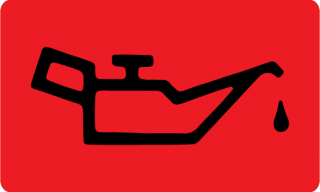
If you see this light while you’re driving STOP. RIGHT. NOW. The oil light is absolutely one of the most important warnings your car can give you. It’s easier to think of your oil warning light as a blood pressure warning. The oil in your car’s engine is just like the blood in your own body. There has to be the right amount at the right pressure. Not enough blood? Blood pressure too low? That makes for a really bad day. It’s the same for your car. If your car’s engine loses oil pressure, the oil warning warning light will come on. Stop the car and shut off the engine right away if this red light comes on. It’s indicating imminent damage to your engine. Running your engine with low oil pressure is just like running it with no oil at all. That kind of damage can get very costly, very quickly. Here’s an important point to make, however. Your car can be low on oil, but still have the correct oil pressure for a time. The oil light is not an indicator of ... read more
Posted on 4/17/2017
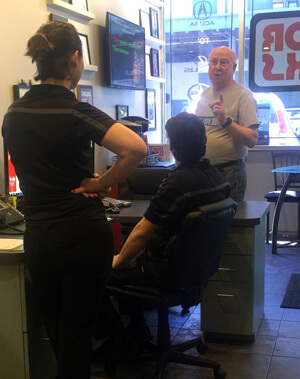
Mr. Christiansen gives Paul and Sara a history lesson on jet engines. You’d never believe the conversations we have with our clients here at Motor Works! Last week, Mr. Christiansen stopped by and we got a history lesson on the development of jet engines. Turns out Mr. Christiansen is a published author and has been driving back and forth to Delaware in his 2005 Acura TL. Why Delaware? He’s researching the development of the Westinghouse J-series jet engines (he’s already written twobooks on the subject) and all of the records are there. We heard ... read more
Posted on 4/11/2017
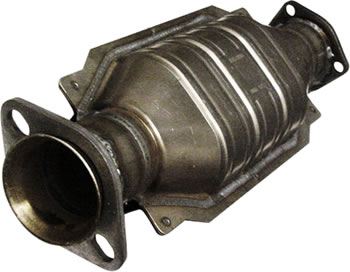
We all want to make sure we’re doing our part to reduce our impact on the environment. A big part of that is making sure your vehicle is in tip-top shape, minimizing harmful exhaust emissions. That’s why, in Maryland, we’re all required to have our vehicle’s emissions systems inspected every two years to make sure it’s functioning properly. A major portion of your emissions control system is the catalytic converter. It’s part of the exhaust system and contains a ceramic honeycomb called a substrate. That substrate has precious metals like platinum, palladium, rhodium and cerium embedded in it. Hot exhaust gasses pass through the substrate and the elements act as a catalyst, causing a chemical reaction in the gasses. That reaction changes the chemical makeup of the exhaust and results in cleaner emissions and, of course, a cleaner environment. Looking into ... read more
Posted on 4/10/2017

Young Ms. Hoyt-O’Connor at the 2016 National Championships At Motor Works, you’re way more than just your vehicle. Behind every vehicle we service is a person or family with a story to tell. The Hoyt-O’Connors have been servicing their cars with Motor Works for about 8 years. Their 2003 Honda Odyssey, at 170,000 miles, has been all over the country for their daughter’s Irish Dance competitions. We got this email from Mrs. Hoyt-O’Connor… Of course, we wish her the best of luck in Ireland! Do you have a neat story to tell? Give us a call or email and let us know
Posted on 4/4/2017
It’s time for the next installment of the “#Gregsplanation“. You’re probably familiar with the Engine Air Filter in your car. It filters the air your engine breathes. But what about the air you breathe? If you’re an allergy sufferer, the Cabin HEPA filter is especially important for you. Check it out! If you have a question you’d like Greg to take a swing at, send an email to [email protected]or give us a call